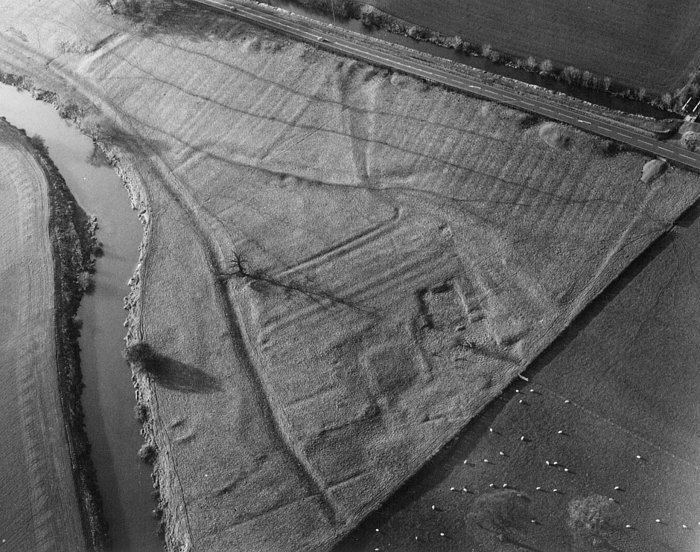Length 83 m Year consecrated 1170 | Width 29 m | |
 | ||
Ecclesiastical or organizational status Ruin. Abbey dissolved 1536, stone sold to build local churches. Similar Whitland Abbey, Valle Crucis Abbey, Strata Florida Abbey, Basingwerk Abbey, Cymer Abbey | ||
The Abbey of Strata Marcella (Welsh: Abaty Ystrad Marchell) was a medieval Cistercian monastery situated at Ystrad Marchell (Strata Marcella being the Latinised form of the Welsh name) on the west bank of the River Severn near Welshpool, Powys, Wales.
Contents
Founding
The abbey lay within the diocese of St Asaph, and the abbey church was dedicated to the Virgin Mary. It was founded in 1170 by Owain Cyfeiliog Prince of Powys, as a daughter house of the Abbey at Whitland. Within two years the Abbey had moved a short distance to the present site but excavations have found no evidence of any early structures before construction in stone started in 1190 so it is likely the earliest building were simple wooden structures. Building work continued until the early 13th century, by which time Strata Marcella had become the largest Cistercian Abbey in Wales. Its nave was 200 feet long. It was monks from Strata Marcella who went to the Vale of Llangollen in 1200 to found the Abbey of Valle Crucis.
Welsh Independence
Gerald of Wales tells of an abbot Enoc (c. 1190, possibly the founding abbot), who was guilty of misconduct with a nun and abandoned the habit. When advanced in years, Prince Owain retired to the monastery and took the habit of the Cistercian monks. On his death, in 1197, he was buried in the grounds of the abbey. His son Gwenwynwyn (ob. 1216) took over lordship of the abbey and increased its endowments; 45 charters, many from the Wynnstay Estate Archives, survive in the National Library of Wales and elsewhere recording such benefactions to the Abbey, and it became a religious house of wealth and importance. Owain's son Gruffyd ap Gwenwynwyn, lord of Powys, entered a monastery when he was close to death about 1260, but recovered during his stay; it is thought that this abbey was Strata Marcella, which was near his seat at Pool.
Strata Marcella was one of a number of Cistercian abbeys founded by Welsh princes which were independent of the Norman-founded abbeys in England. As such they tended to support the Welsh princes in their struggles against King Edward I of England and the Marcher Lords. Because of this the Abbey suffered much damage during the Welsh wars of independence, and by the fourteenth century was in a state of poverty. In 1332, the local feudal lord, John de Cherleton, accused the abbot and monks of working against English rule in Wales; he evicted all the Welsh monks, sending them to English houses, and replacing them with English monks from Buildwas Abbey in Shropshire.
Owain Glyndŵr
During the Owain Glyndŵr rising at the beginning of the 15th century the buildings were heavily damaged and the monastery never completely recovered.
The Dissolution
The abbey was finally closed in 1536 at the dissolution of the monasteries in England and Wales, when its income was valued at no more than £64 a year. At that time there were only four monks at the abbey and Edward Grey, the third Baron Grey of Powis, had already purchased the site and had removed everything of value. The stone from the buildings was sold and used to build several local churches, including a capital in the church of All Saints at Buttington. Today the only visible remains are a few courses of stones from the church and cloister in a meadow beside the infant River Severn.
Excavations
The site was excavated in 1890 by Stephen W. Williams for the Powysland Club. The church had an overall length of 273 feet, with an aisled nave 201 feet long, transepts were 96 feet long with a short rectangular chancel, and a 30 ft square tower at the crossing. The long period of building was from c. 1190 till the early C14. There were buttresses, including clasping buttresses at the w end. The red sandstone columns of the ten-bay nave had the Early English pattern of shafts clustered on piers. Transitional and stiff-leaf capitals of great beauty reflect the sculptural developments between c. 1190 and c. 1210. Much of this space was occupied by two monks' choirs. It seems that the elaborate doorway to one of these may have been the original W doorway. Pier stones with 14th century wavy mouldings were found on the site of the tower. The cloister on the S was not excavated. Finds, including 13th century tiles and stone fragments, are in the Powysland Museum, Welshpool.
Recently the site of Strata Marcella has been resurveyed by Clwyd-Powys Archaeological Trust and this has modified some of Stephen Williams' findings.
